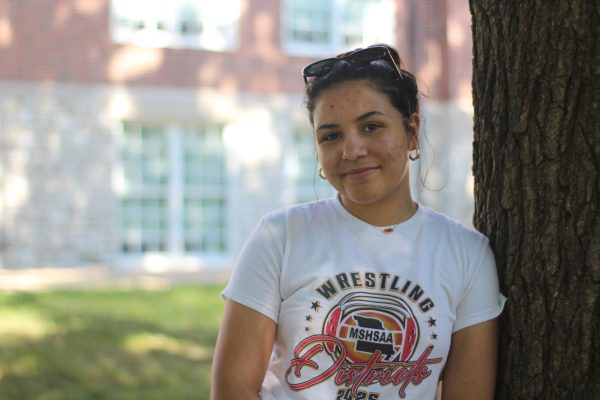Undertaking AMI Days
Teachers and students adapt to online school for AMI Days
This winter it snowed a lot in St. Charles, Missouri, and because of this St. Charles High School decided to use up their AMI (Alternate Methods of Instruction) days. AMI days means that all the students had to stay home and do virtual school that school day.
Why have AMI days? Well it’s simple. Teachers will miss out on teaching their students and will get behind if they miss school. AMI days wouldn’t be added on to at the end of the year because they count as actual school days. Some students didn’t exactly have wifi, therefore these students have to make up all their work on a later date. The teachers of these kids who didn’t have wifi had to come up with ways to get around it, while trying to teach their students. But they also had to keep their personal life out of their work life.
“I wasn’t sure how I was going to be able to teach while in the house. Especially because the baby needs to be nursed and she cries a lot. I knew that I wasn’t going to be able to teach while listening to her cry,” French teacher Anna Schrader said.
Teachers were expected to split their home life and school life apart to teach their students which was difficult for certain teachers. Schrader had to call her father on the last AMI day because she was having a hard time watching her kids while working.
Not only did some students not have the ability to join their classes during these AMI days, but they were also expected to pay attention in an online environment even though they chose to be taught in person.
“I think it is unfair to put students who aren’t virtual and choose not to be for reasons, to put them in an online environment even though they already chose not to be in that,” sophomore Collin Martinez said.
Some teachers loved being home, and being able to dress in pajamas. But for English teacher Brittany O’Keefe the cons of the AMI days outweigh the pros.
“I like the idea of AMI days, I liked the concept at first. The more they went on it was like ‘okay we’re still doing this.’ Like it got exhausting very quickly. The concept of ‘oh stay home, be in your pajamas,’ that’s cool,” O’Keefe said. “But then over time it was like I missed being here, and it felt like I wasn’t being as effective as a teacher and I felt like my students weren’t effective as they normally are therefore being at home was affecting everybody. Overall I ended up not being a fan.”
Some teachers and students actually believe that the AMI days should have been separate (having one AMI day then a snow day) a little bit instead of having it all at the same time. Schrader would rather be a little behind than mentally exhausted.
“My least favorite thing was just the concept of teaching everyone virtually. I got a taste of how every student and teacher feels being virtual all year. It is not for me, not my lifestyle,” O’Keefe said.
It is a fact that staying home and sitting around all day will make kids tired. The good thing about in person schooling is that students are active most of the time, especially when transitioning into other classes. The students that chose to do it in person, chose to be in person, so when virtual school came around for the AMI days these students had to try to adapt to the fact they’d be sitting around during all the classes staring at their screen(s).
“I don’t think we should have AMI days at all. We should have done snow days instead, we had extra days. It was a viable option, and we weren’t gonna have the snow for long,” Martinez said.






